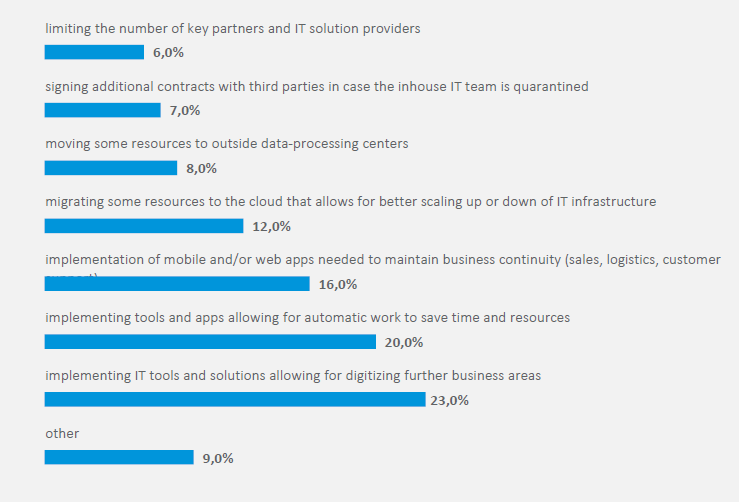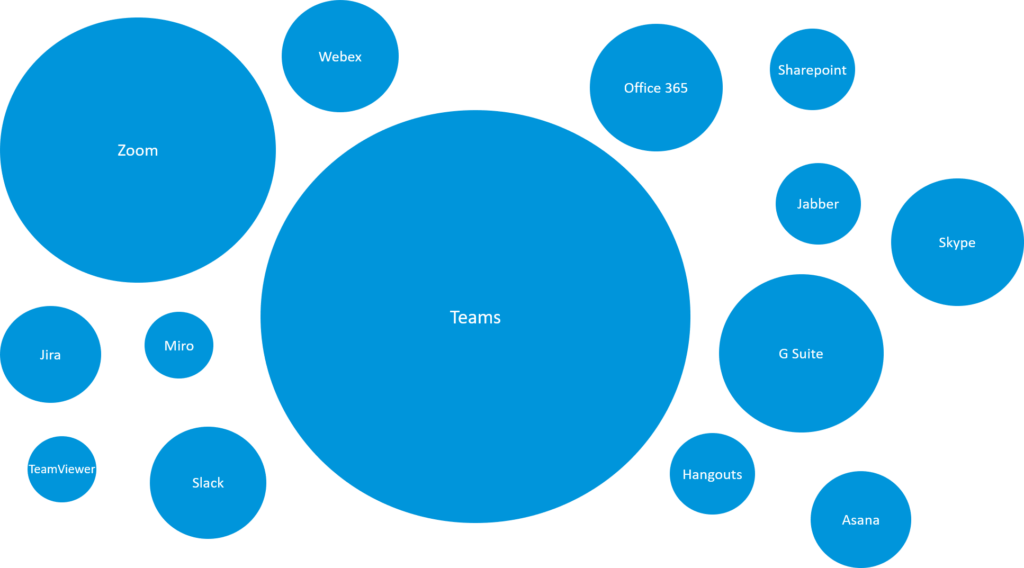Although we know that the COVID-19 pandemic has accelerated digital transformation, thanks to McKinsey’s latest Global Survey of executives we can even estimate to what extent. According to the McKinsey survey, companies have picked up the speed of the digitization process by three to four years, with the share of digital or digitally enabled products in their portfolios being accelerated by seven years.
This rapid pace is perfectly justified, as an effective transformation into digital has become necessary for the survival of many individual companies, as well as overall economies.
One of the key questions now being asked is:
Has the COVID-19 pandemic caused rapid ad hoc changes in the digital transformation of companies?
As you might expect, the actual answer is a bit more complex.
At C&F, we have researched how companies are dealing with this crisis, have helped assess the situation, and shared our recommendations with companies by leveraging our expertise in data management, advanced analytics, and risk & compliance. Although I will take the opportunity here to summarize some of the key findings from our research, I would strongly encourage reading the entire C&F report which also contains many interesting conclusions from our company experts.
Information security: Despite ample warnings, companies were still caught off-guard
Next to the obvious economic and personnel risks associated with the COVID-19 pandemic, the online survey conducted by C&F showed that 60% of the managers consider cyber security and data protection being among the most important areas exposed to risks during this crisis. However, as my colleague Jan Anisimowicz rightly pointed out in the report, Bill Gates and many others had been warning the world for years of the risks of a pandemic outbreak and its economic consequences. Even though the risk was known, the Bitdefender study revealed that half of the infosec specialists admitted that their companies had no contingency plan. At the same time, 86% of them have also noticed more frequent cyberattacks. In response to this ever increasing threat, one of C&F’s key recommendations is for companies to take a holistic view of their organization from the GRC (Governance, Risk and Compliance) perspective to improve their business and IT resilience.
The digital explosion
As previously mentioned, the pace of digital transformation due to the COVID-19 pandemic has been extremely high. C&F’s online study shows that many companies implemented new digital tools to maintain business continuity, automate processes, and digitize further business areas.

C&F also reviewed the mobile and web apps that have been most indispensable for companies for continued operation during this crisis. As you might expect, there were few, if any, surprises there:

However, what C&F’s COO Tomasz Bogusławski points out is that in many cases companies acted on an ad-hoc basis. While organizing a virtual office on the fly does not have to end badly, digitizing company-critical processes like production, logistics, and sales (especially in regulated industries) very well could. One of Tomasz Młodecki’s recommendations is that digital transformation must be carried out with an approach where data management is a priority. This is the only way to successfully transform into a data-driven organization. The good news is that all this hard work and effort literally pays off. For example, experts from the McKinsey Global Institute reveal that data driven organizations are 23 times as likely to attract new clients, 6 times as likely to retain them, and 19 times as likely to profit as non-data-driven ones.
What happens next?
The fight against this crisis will continue to rage on multiple fronts. Respondents in our study pointed to achieving and maintaining profitability as their company’s top priority. In the context of securing income, an important goal for managers at the current stage of the crisis is to adapt customer support and sales processes to the new normal. This means that the demand for new digital solutions will keep increasing.
C&F’s Manoj Nair comments in the report that trends like omnichannel, AR in virtual shopping, and continuous UX improvement will only increase in force. If you want to deepen your insight into sales and customer service transformation, I highly recommend reading Manoj’s article.
Quick and effective development of new apps will become increasingly important. Manoj concludes that the future of application and solution development is with low-code platforms, as they ensure rapid production coupled with customization capabilities as needed. Gartner’s predictions are that by 2024 up to 65% of all software will be built using low-code.
The COVID-19 crisis has also significantly impacted IT investment. As analysts continue to update their forecasts, a definitive trend is beginning to emerge: global IT spending will be several percent lower than last year (Gartner: 7.3% decline; Statista: 5.1% decline). At the same time, higher spending on digital transformation is predicted (Statista: 10.4% increase).
According to CTO Wojciech Winnicki, the near future belongs chiefly to data-driven decision making. Even if overall IT budgets this year are going to be a bit tighter than last year, the decrease will be temporary. At the same time, not only aren’t companies slowing down their digital transformation, they are in fact accelerating it.
C&F’s online survey confirmed that the majority of managers who participated in the study have the budgetary means to implement technologies to support their companies during this pandemic. Some were even going to increase their earlier digital transformation budget. Finally, a third of the respondents reported that even though their company was short on funds to satisfy all digitization needs, they were going to implement it piecemeal.
Once again, what I have provided here is only a high-level summary of the entire C&F report. I would highly recommend reading the entire report where you can gain additional interesting insights from the underlying data from both our study, as well as others.
Would you like more information about this topic?
Complete the form below.
